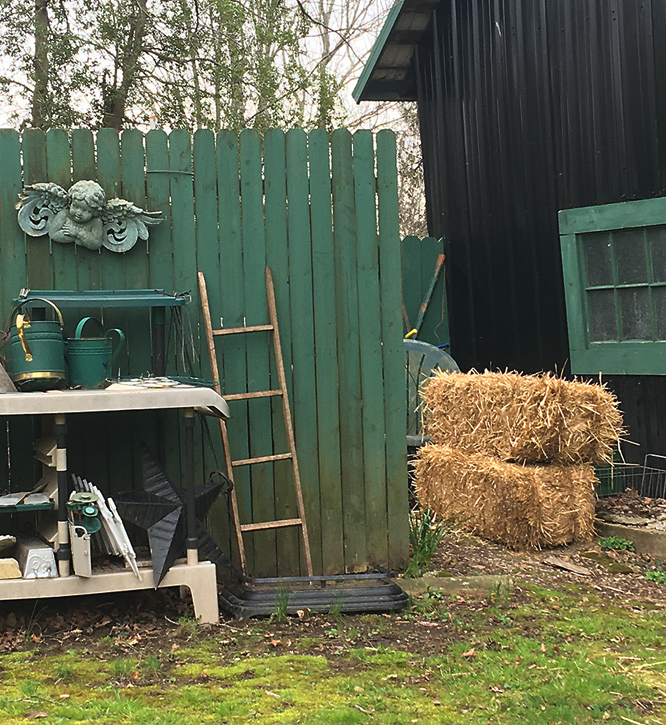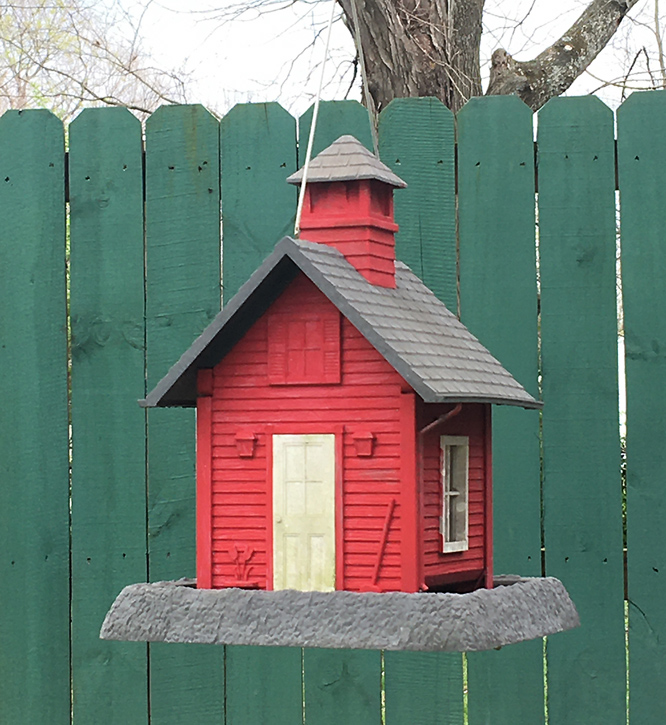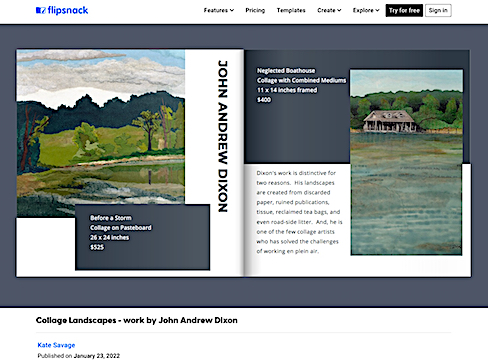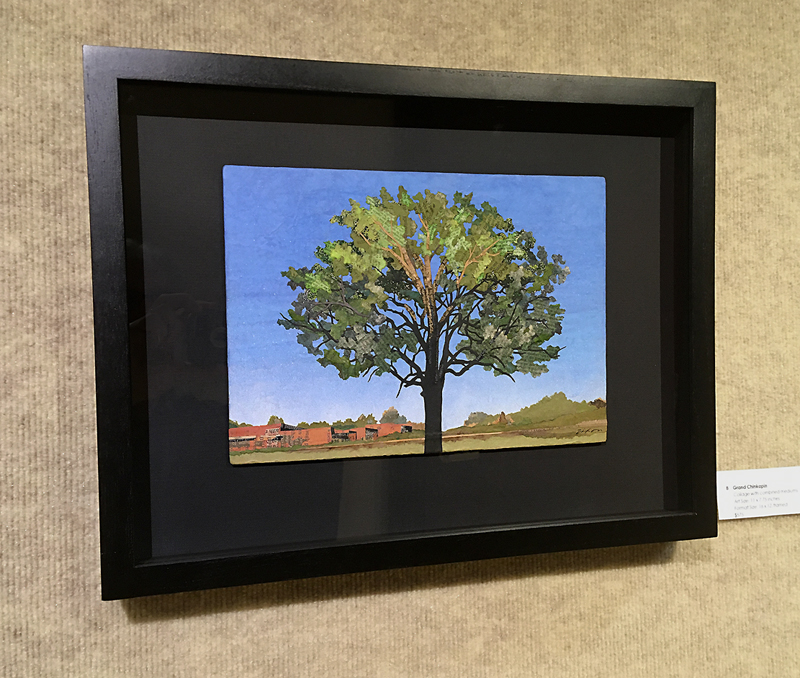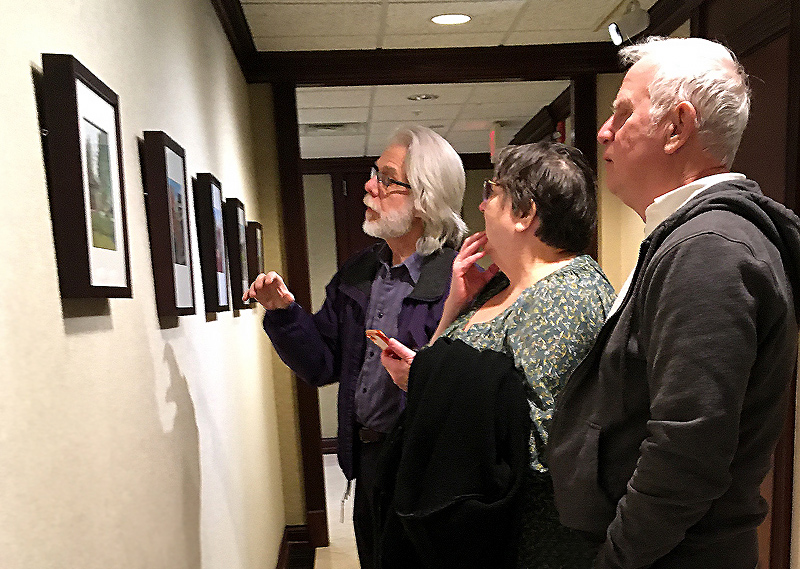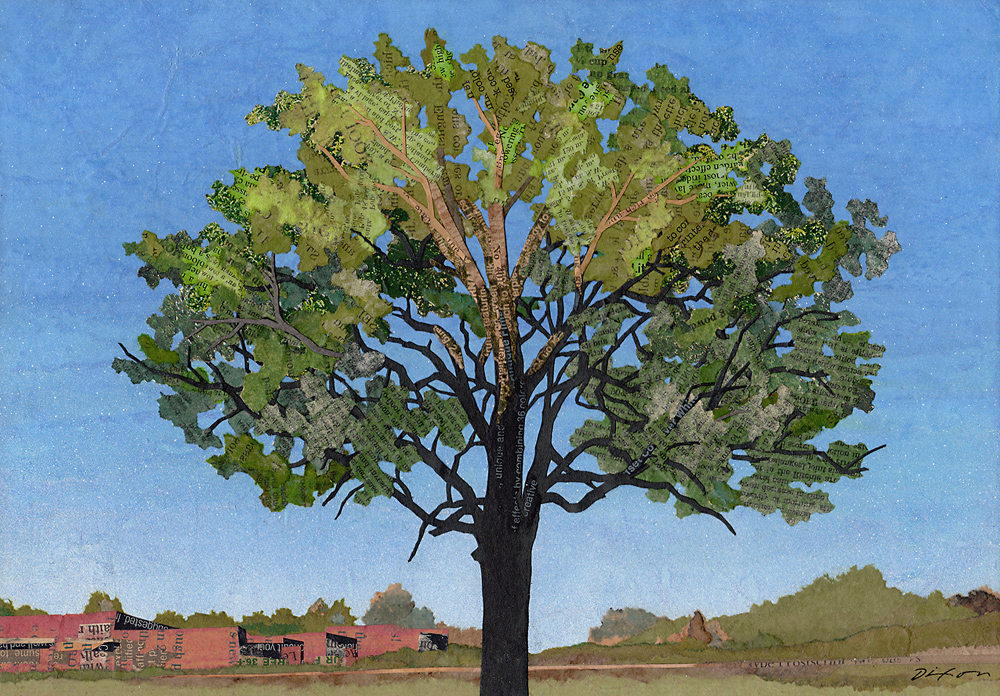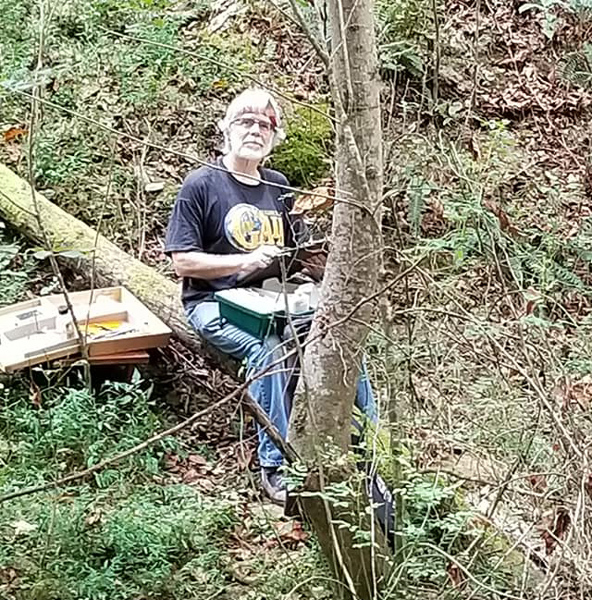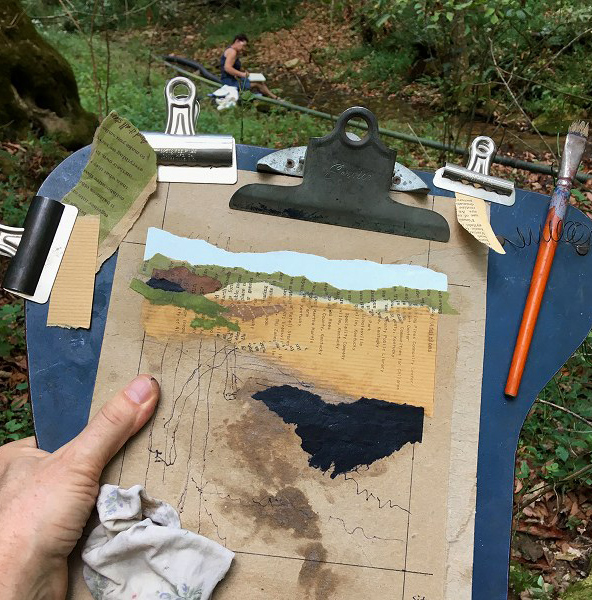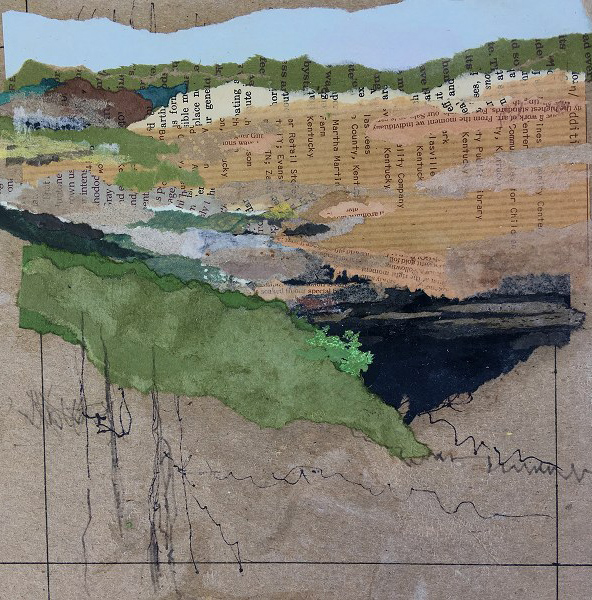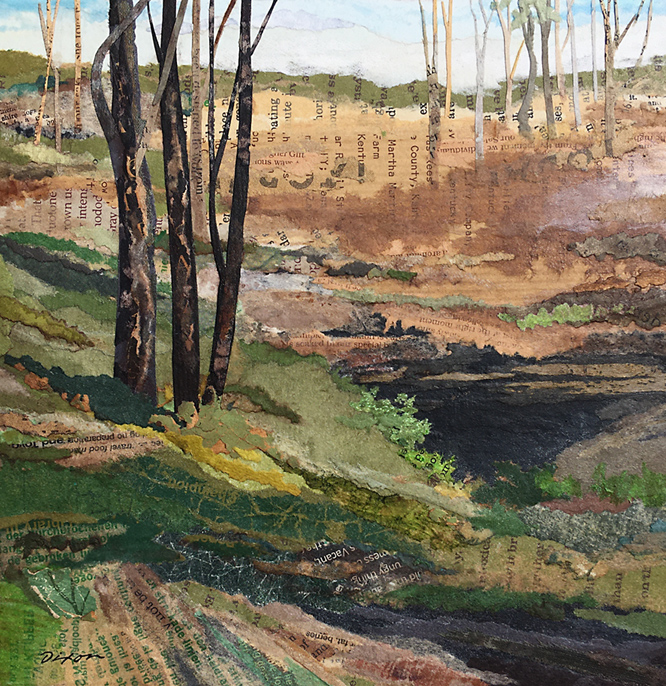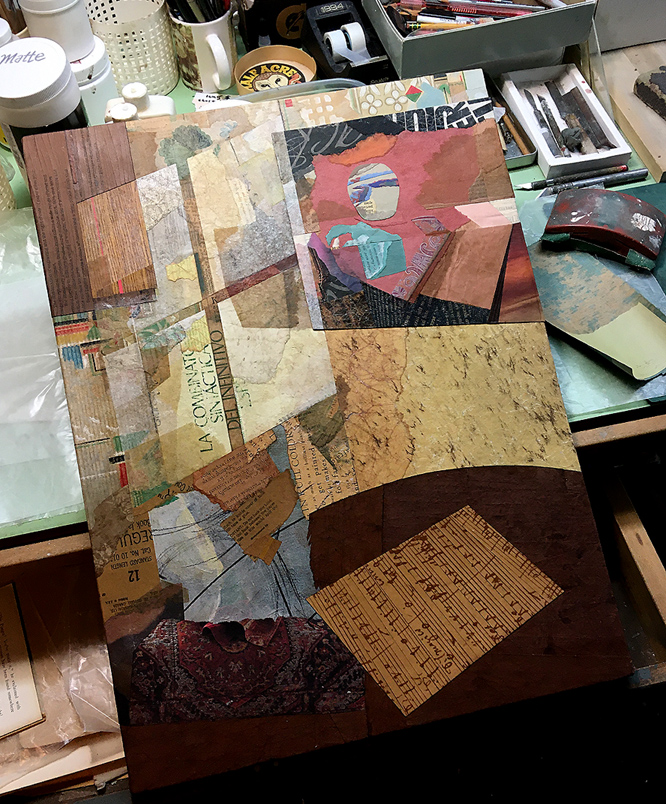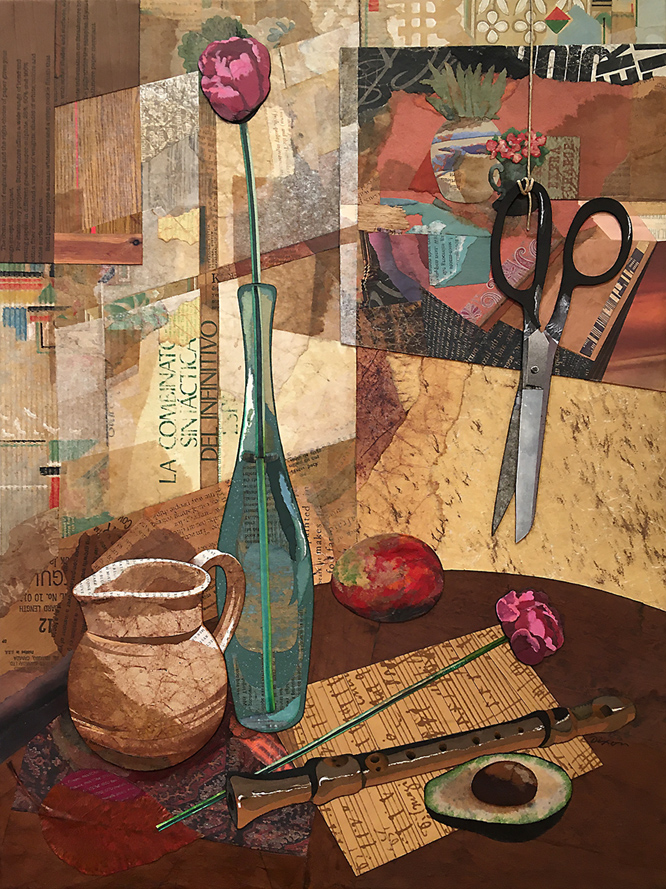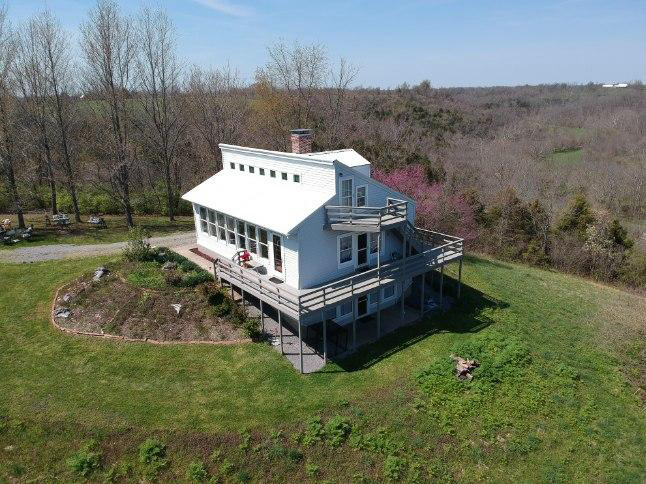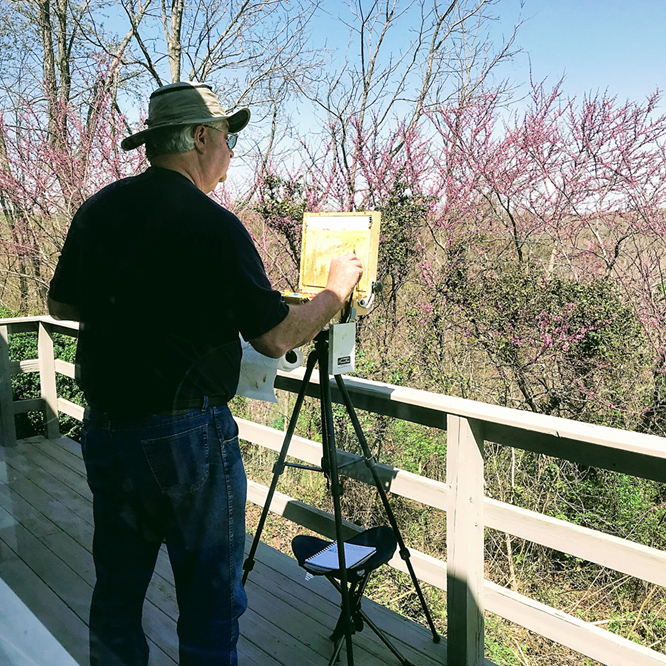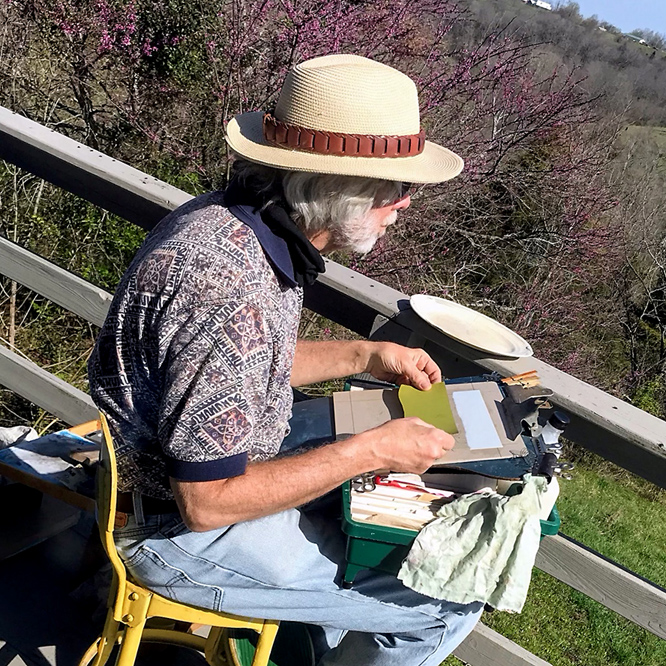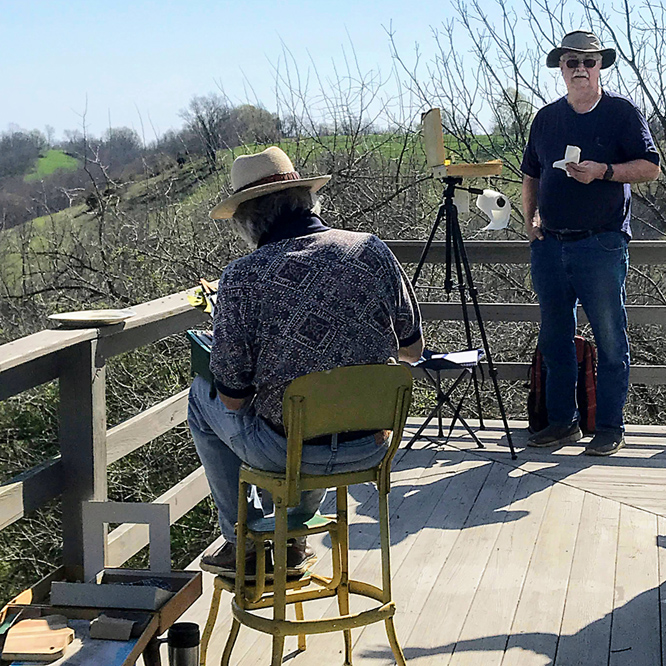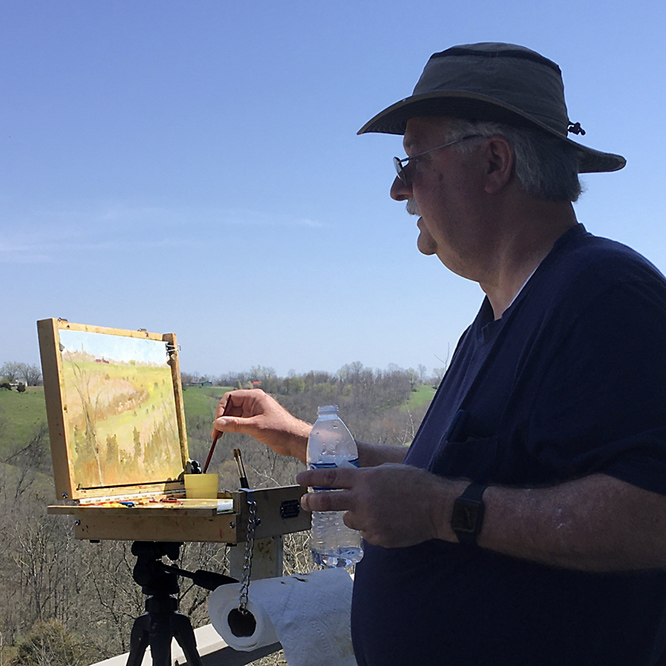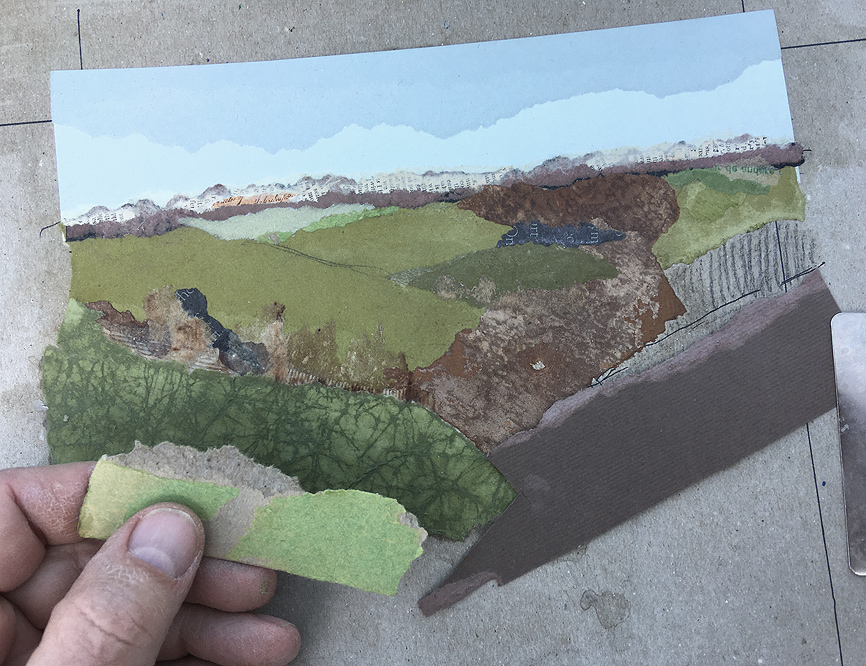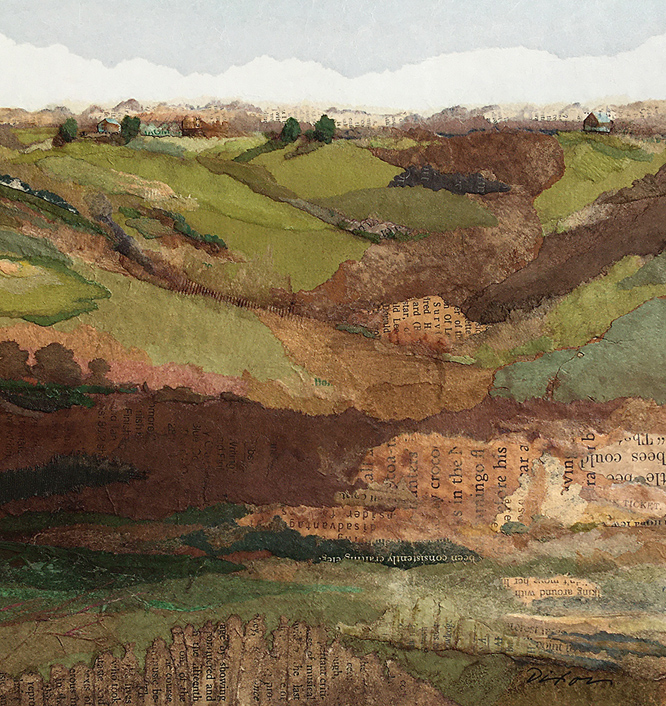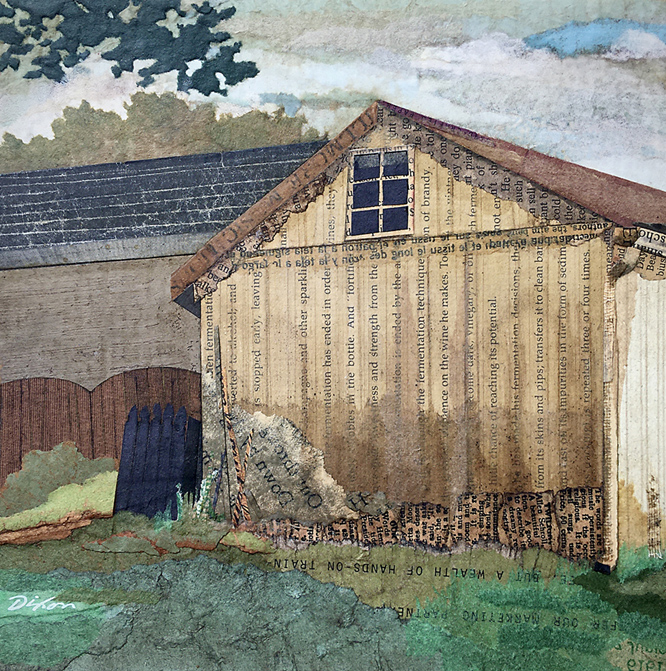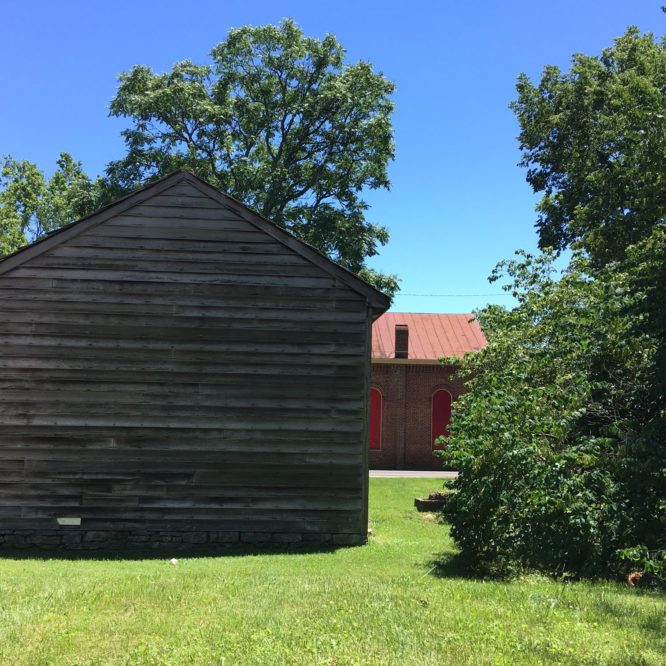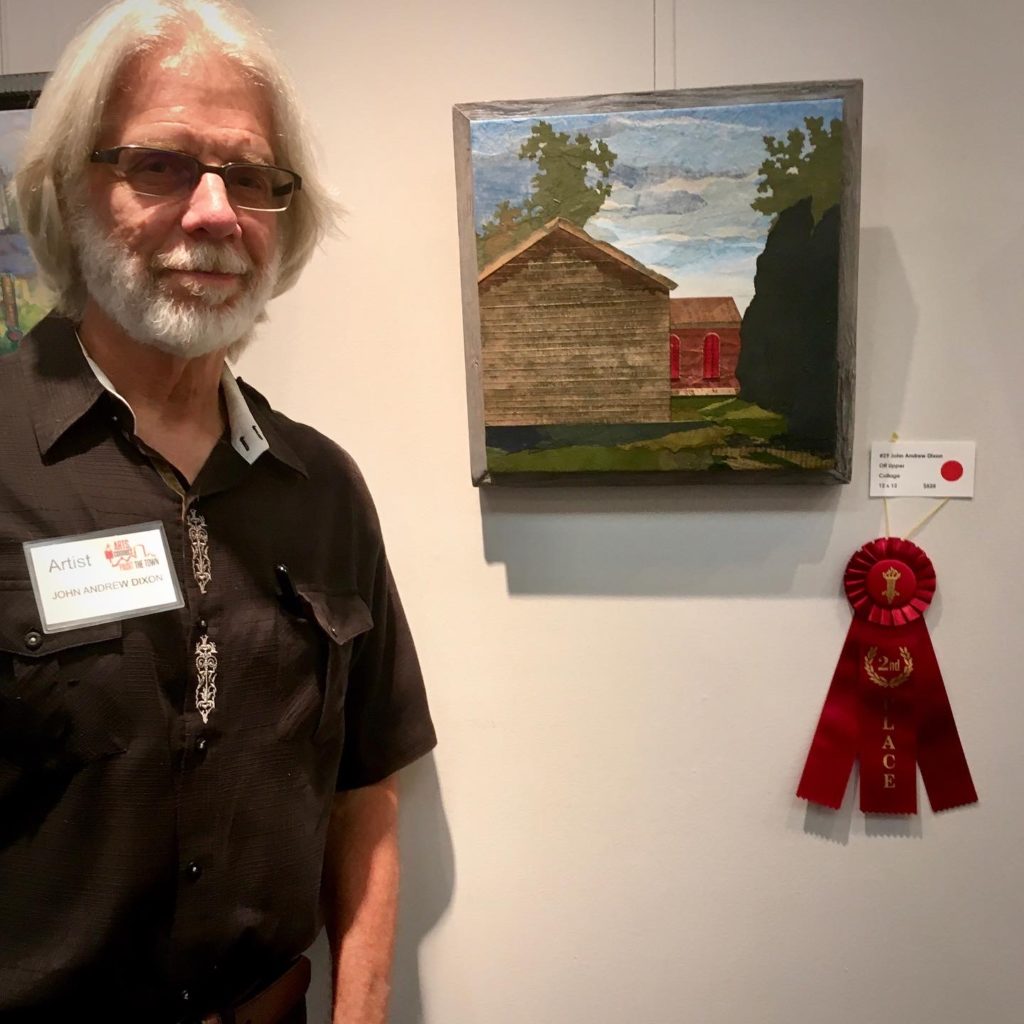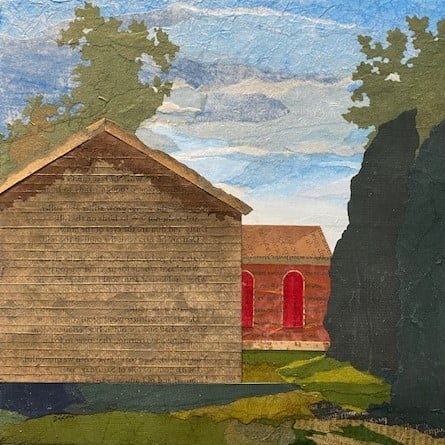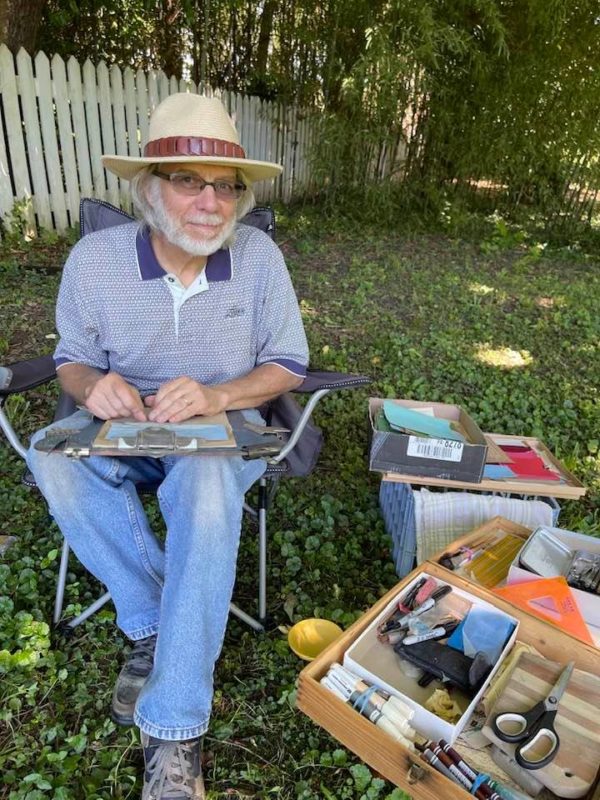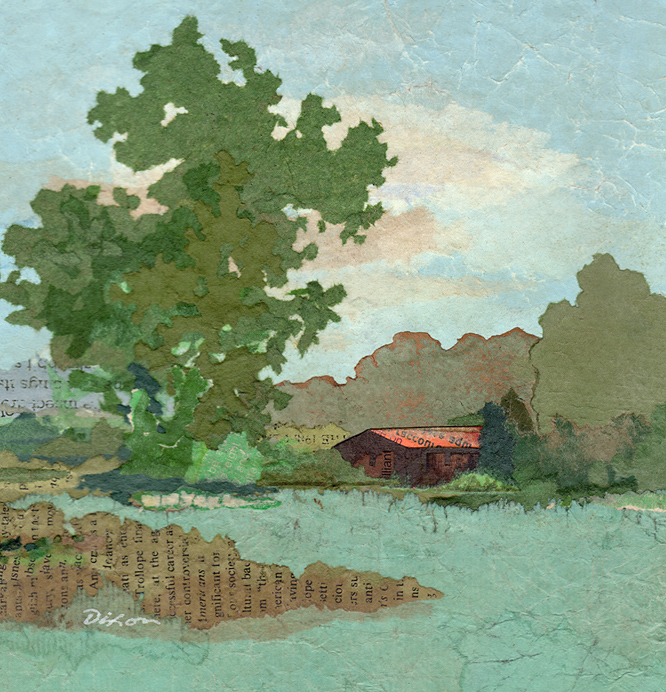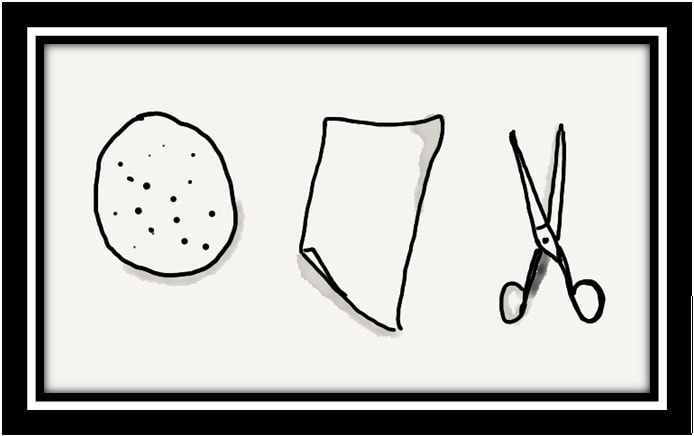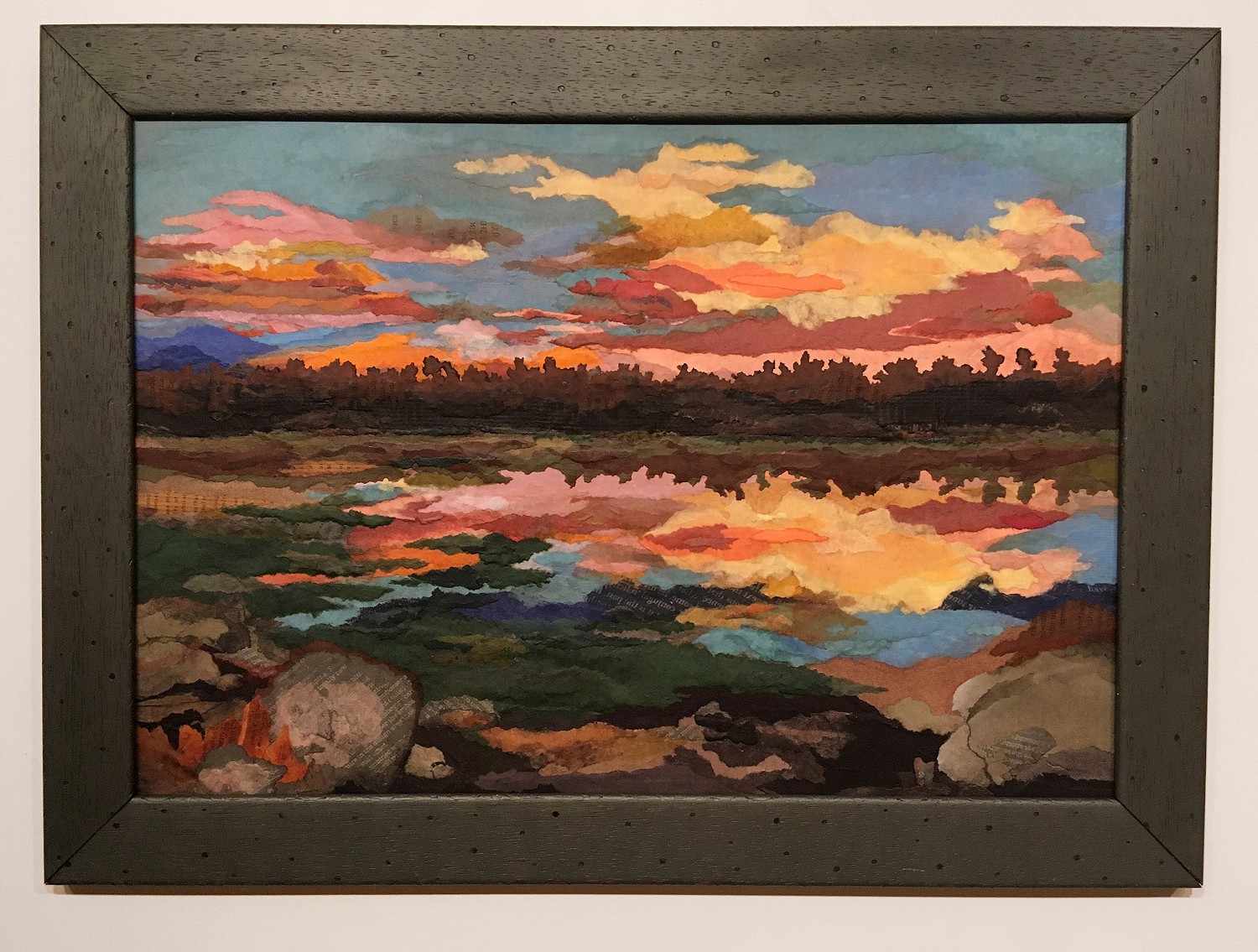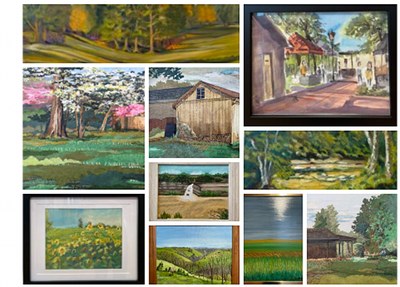 En Plein Air
En Plein Air
an exhibition of recent
work by the Plein Air
Artists of Central Kentucky
It’s been an exceptional season for making art outdoors, and our local Art Center of the Bluegrass is currently presenting many of the resulting creations. I have six collage miniatures on display as part of the show. Enjoy the exhibit in-person or browse the virtual gallery until 9/11.

One of the highlights of the spring was our gathering at the backyard of Lee and David Simpson, with its quiet explosion of white and pink dogwood trees. They were certainly calling attention to themselves here and all over Danville. What a perfect day to be outside with the PAACK and “painting with paper,” thanks to my mobile collage kit. After some initial work, I gradually became convinced the scene was taking shape. As location coordinator for the day, I’d gotten off to an awkward start. I eventually came away from the pleasurable day with a solid interim stage, but as I began to finish the trees in the studio, it was clear that the piece needed more than details to improve it. 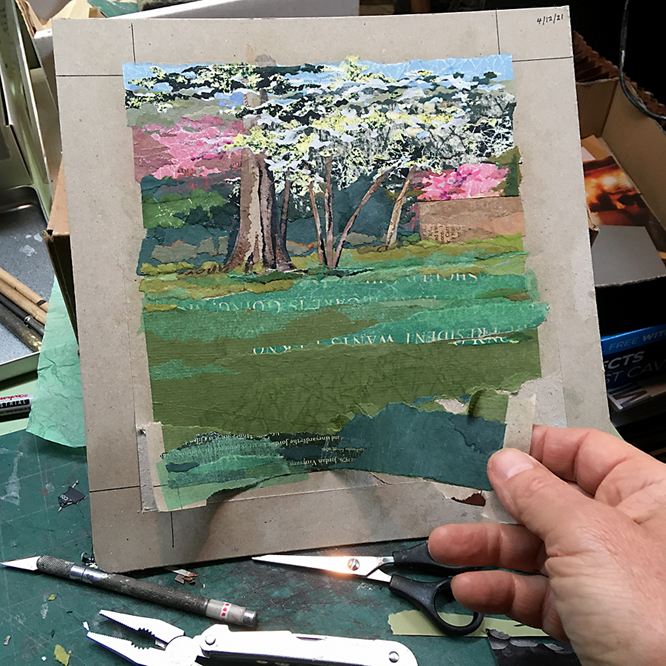 When I decided that the foreground was too deep, I impetuously peeled off the base and moved it up an inch or so — after all, this is collage. That one modification helped everything about the look. The rest of the process became obvious. If I reinforced the sun-activated colors and spent a bit more time with the fence area on the right side, I could declare it finished, as long as I stayed within an overall time allocation that was legitimately en plein air. I was pleased to achieve a 70%/30% solution.
When I decided that the foreground was too deep, I impetuously peeled off the base and moved it up an inch or so — after all, this is collage. That one modification helped everything about the look. The rest of the process became obvious. If I reinforced the sun-activated colors and spent a bit more time with the fence area on the right side, I could declare it finished, as long as I stayed within an overall time allocation that was legitimately en plein air. I was pleased to achieve a 70%/30% solution.
Whenever I gather under the sky with traditional landscape painters, their impressive work challenges me to “do my thing” with paper. With each outing, it’s feeling more like I’m painting, too! 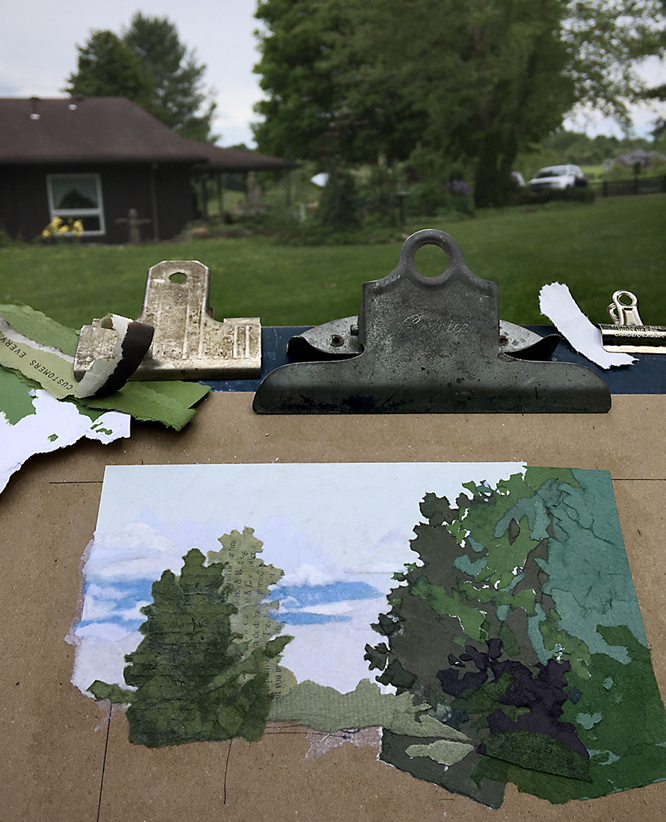 This was true in May, when we spread out to interpret the country home site of Paula and Ken Scott. A particular view of their wrap-around porch and surrounding garden captured my eye. I wanted to combine some hard-edge cutting with my evolving “brushstroke” technique. As is often the case, I pushed the finishing touches back in the studio to the 50/50 limit, matching my location time with more detailed refinements indoors. I’m still trying to solve how to bring something closer to a level of interesting density while still outside. Perhaps I’ll find that, by necessity, a totally site-based collage needs to be simpler in expression and more decisive in composition. A milestone in June and the subsequent Paint the Town experience would drive home the point, and also emphasize the importance of having a supply of “prepared papers” on hand to boost speed and expand my available vocabulary of effects.
This was true in May, when we spread out to interpret the country home site of Paula and Ken Scott. A particular view of their wrap-around porch and surrounding garden captured my eye. I wanted to combine some hard-edge cutting with my evolving “brushstroke” technique. As is often the case, I pushed the finishing touches back in the studio to the 50/50 limit, matching my location time with more detailed refinements indoors. I’m still trying to solve how to bring something closer to a level of interesting density while still outside. Perhaps I’ll find that, by necessity, a totally site-based collage needs to be simpler in expression and more decisive in composition. A milestone in June and the subsequent Paint the Town experience would drive home the point, and also emphasize the importance of having a supply of “prepared papers” on hand to boost speed and expand my available vocabulary of effects.
I like to work outside because I like to be outside. When I formerly thought of myself as an amateur triathlete, I’d cross-train right through the hottest days of the summer. It doesn’t bother me to extend an Art Out into the late afternoon. Sometimes the morning shade has long since abandoned me. If I’m well into the groove, I can barely notice. Before I get totally off the subject here, I should state that I actually rely on direct sunlight to promote the drying of my collage surface, since I’m usually working wet-on-wet. A good example of this was the day PAACK gathered in the nearby Forkland community. I don’t fault others for finding a shady spot to paint. I set up not far away in the open sun.
In the decades since this Ohioan adopted Central Kentucky as my permanent home, I’ve developed an affection for the distinct topography and knobby woodlands of our area. Sure, the famous horse farms and limestone palisades are always handy, but I’ll never get enough of the unique contours of a “gumdrop horizon.” The Forkland community, which straddles three adjacent counties, was a destination that fit my attachment to “The Knobs”. The result was On the North Rolling Fork, one of my favorite landscape miniatures of the year.

Dogwood Day
collage miniature by J A Dixon
70% / 30% — site to studio
8 x 7.75 inches
• S O L D

Country Porch
collage miniature by J A Dixon
50% / 50% — site to studio
7.75 x 7.75 inches
• S O L D

On the North Rolling Fork
collage miniature by J A Dixon
50% / 50% — site to studio
8 x 7.75 inches
• S O L D
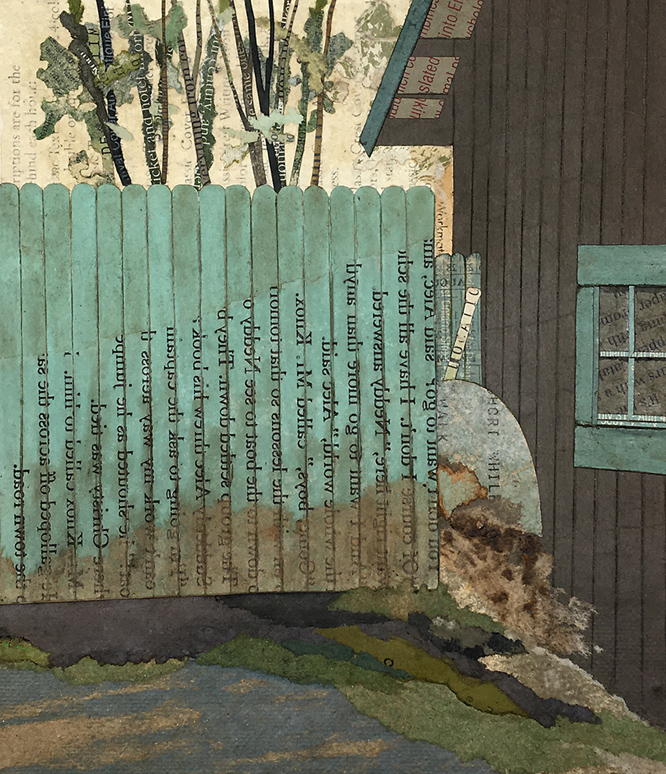 I really enjoyed PAACK’s chilly kickoff outing at the home of Mrs. Penn. As everyone began to focus on her exploding flower beds, I turned my attention in the other direction (for some odd reason). I couldn’t deny an interest in her staging nook near a teal fence (in the same way I was captivated by the back of Tillie’s garage last year). I’m completing the collage I started that day, and it will be a challenge to finish it for our summer show within the 50:50 limitation. I wouldn’t mind interpreting the gardening table, but I’ll need to omit that element to pull this off. I’d rather “move” the nearby bird feeder into my composition for a splash of complementary color, and also to find some way, within the remaining time, to “paint” the hay bales with paper ingredients.
I really enjoyed PAACK’s chilly kickoff outing at the home of Mrs. Penn. As everyone began to focus on her exploding flower beds, I turned my attention in the other direction (for some odd reason). I couldn’t deny an interest in her staging nook near a teal fence (in the same way I was captivated by the back of Tillie’s garage last year). I’m completing the collage I started that day, and it will be a challenge to finish it for our summer show within the 50:50 limitation. I wouldn’t mind interpreting the gardening table, but I’ll need to omit that element to pull this off. I’d rather “move” the nearby bird feeder into my composition for a splash of complementary color, and also to find some way, within the remaining time, to “paint” the hay bales with paper ingredients.